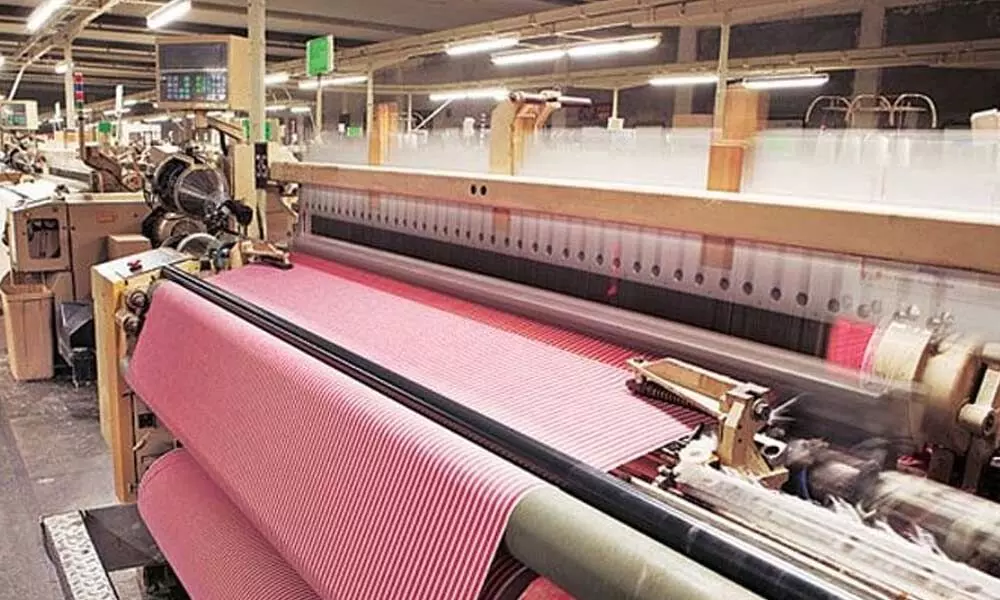Budget 2022: A mixed bag for textiles and clothing industry
Though textiles industry allocation increased to 8.1%, the budget failed to relax import duty on cotton as high prices of raw material are hurting the garment industry
image for illustrative purpose

Most of my industry friends from textile and garment took time to react on the budget, they were not confused but trying to understand that is this enough at this crucial time when their business is doing well, they are expecting good business further also. Our Government has an ambitious export target, schemes such as PM MITRA and PLI for textiles are going to get implemented from this year. Sentiments are again improving due to the reduction in Covid cases. Budget doesn't make any direct announcement for the textile and clothing sector.
The matter is not that what we got in this Budget, it is more important what we missed in the Budget. Need of the hour was the removal of 11 per cent import duty on cotton as the mounting challenge is the high price of raw material. Any short or long-term step has not been taken for this issue and this is one of the biggest disappointments of the Budget. It is difficult to understand why Government failed to realize that this duty is not benefitting the farmers but hurting the garment industry. Recently our Finance Minister also had a meeting with industry bodies and it was heartening to see how Tamil Nadu's ministers strongly advocated for the industry's interest.
The steep increase of the cotton's price in the international market and the consequential jump in domestic cotton prices has made the farmers to get good amount for their produce during the current season, though it has impacted the cotton textiles value chain exporters. If our Government wishes to support farmers more, it should allocate funds to increase the cotton production and good seeds for the same rather than imposing import duty. There is no rocket science in this. It will be highly beneficial for all if India will have more production from equal cultivation area of cotton. Land can't be increased to have more production but good quality seeds can be developed.
A lot of companies are expanding and as the market is expected to grow at a good pace, many more will expand. At this critical juncture, there is no increase in allocation for Amended Technology Upgradation Fund Scheme (ATUFS) while this was also a need of the hour.
Despite this unanswered major demand, the garment industry is satisfied as they got some relief at least. For MSMEs, the extension of the ECLG scheme for one more year is worth appreciating but it is really disappointing that the enhanced outlay for the scheme is restricted only for the hospitality Industry. This can be enhanced for our industry also as we were equally affected. The garment industry should also get at least some amount of this enhanced outlay. Rs 2 lakh crore additional credit for Micro and Small Enterprises will be facilitated under the Credit Guarantee Trust for Micro and Small Enterprises (CGTMSE). The Government is also rolling out Raising and Accelerating MSME performance (RAMP) programme with an outlay of Rs 6000 crore. It will be interesting to see that how MSME take advantages of these initiatives.
One thing which is undoubtedly going to help the garment industry and especially exporters is the reinstating duty-free facility for importing various kinds of embellishments like zipper, fasteners, buttons etc.
The combination of specific and ad-valorem rate is being replaced by ad-valorem rates only and the rate for the items placed under tariff items of 6101, 6102 or 6103 (import of men or boys / women or girls overcoats, cloaks, wind-cheaters, wind–jackets and women jacket, ensamples etc.,) has been increased from 10 per cent to 20 per cent. It is going to protect the domestic garment manufacturers of these kinds of items.
Made-ups segment is equally important in the textile value chain, but it has been left out of the facility of duty-free imports of specified goods by bonafide exporters. When this facility has been extended to the three segments, exporters of the garment, handicraft, and leather goods, why not made-ups?
There are also positive steps that are going to help the industry like the benefit of 15 per cent tax for the newly incorporated manufacturing units by one more year. It will be also be instrumental in fetching more investments.
Long term thinking is very much required and Government has worked accordingly in this Budget specially, looking to PM GatiShakti national master plan which encompasses the seven engines for economic transformation, seamless multimodal connectivity, and logistics efficiency. No doubt that this time overall Budget allocation for the textile industry is around 8.1 per cent higher compared to last time but when our nation has an ambitious growth target and industry is on its toes to support the Government to achieve this, definitely industry needs more, and that too on a priority basis. But have we missed short-term and immediate support in this Budget?
(The author owns a garment manufacturing setup in a rural area, which employs mostly women workers)

